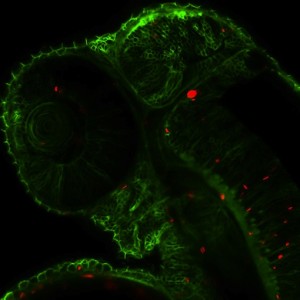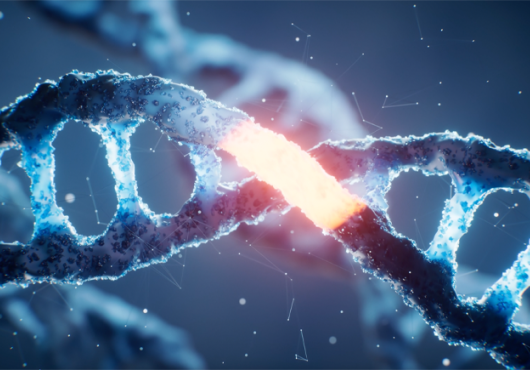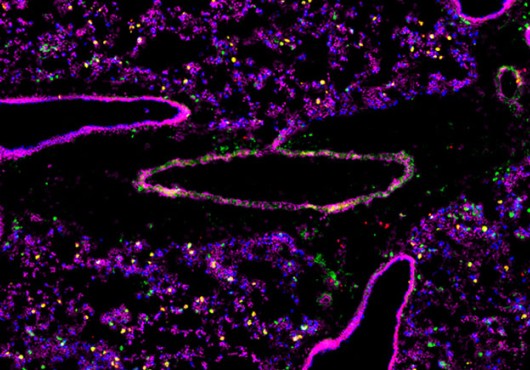Mimicking the symbiotic evolution that let plants reap energy from sunlight, HMS researchers have injected photosynthetic bacteria into the cells of fish, which then went on to develop normally even as the solar-powered bacteria lived—for a time—inside them. The achievement not only sheds fresh light on evolution, but also lays down roots for novel cellular machines that could one day grow designer molecules such as nutrients, medicines and biofuels.

Most biologists believe that the chloroplast, the photosynthetic machinery of a plant cell, descended from a simple light-harvesting organism that evolved a symbiotic relationship with its host. In their experiment, the HMS researchers induced just such a relationship, known as endosymbiosis, inside animal cells by cultivating the photosynthetic cyanobacteria S. elongatus within embryonic zebrafish.
The findings, reported in an article titled “Toward a Synthetic Chloroplast,” were published April 20 in the journal PLoS ONE.
“We used a synthetic approach to developing photosynthetic associations with animal cells, finding that injecting S. elongatus into the zebrafish embryo does not affect fish development,” wrote the researchers, led by Pamela Silver, HMS professor of systems biology. The zebrafish cells divided normally, and the cyanobacteria survived until pigments in the developing embryos began to block light.
While the Harvard researchers were conducting the experiment, a Canadian team discovered a similar phenomenon in the wild: The cells of some salamander embryos play host to algae that disappear as the embryos turn opaque.
A similar endosymbiotic relationship is believed to help explain the evolution of the mitochondrion, an organelle that, like the chloroplast, has its own genetic code.
Scientists had observed photosynthetic bacteria living endosymbiotically within invertebrate animals, including coral and sea slugs, leading Silver to wonder whether such bacteria could be introduced to other species as well.
A PhD student in Silver’s laboratory, Christina Agapakis, took up the challenge, working with master’s student Henrike Niederholtmeyer and with Ramil Noche, a research fellow in the lab of Sean Megason, HMS assistant professor of systems biology. “The biggest surprise was that the zebrafish lived just fine with the bacteria inside them,” Agapakis said.
Separately, the Silver lab has engineered strains of bacteria that produce sugar, which could in theory provide energy to a host cell, although Agapakis cautioned that the quantities were far too small to make a difference.
In future research, the HMS researchers hope to engineer relationships in which the bacteria provide essential molecules to host cells. “Our results show that it is possible to engineer photosynthetic bacteria to invade the cytoplasm of mammalian cells for further engineering and applications in synthetic biology,” the researchers wrote. “Engineered invasive but non-pathogenic or immunogenic photosynthetic bacteria have great potential as synthetic biological devices.”
The Silver lab is also exploring the potential of cyanobacteria to produce biofuels and other commodities. “We have a large-scale interest in light-harvesting microbes,” said Silver. “We want to understand how to make that process more efficient by making carbon fixation more efficient.”


